




SATURDAY, JULY 8 | 7:30PM | WHITE RECITAL HALL
SUNDAY, JULY 9 | 3:00PM | ST. MARY’S EPISCOPAL CHURCH
String Sonata #6 (1804) Gioachino Rossini (1792-1868)
I. Allegro spiritoso
II. Andante assai
III. Allegro Tempesta
Tony DeMarco, violin; Rena Ishii, violin; Alexander East, cello; Evan Halloin, bass
Two Rhapsodies (1901) Charles Mar n Loeffler (1861-1935)
I. The Pond
II. The Bagpipe
Celeste Johnson, oboe; Duke Lee, viola; Karen Savage, piano
String Quartet #1 “Quarte no” (1952)
Einojuhani Rautavaara (B. 1928)
I. Presto
II. Andante
III. Vivace assai (alla giga)
Rena Ishii, violin; Tony DeMarco, violin; Duke Lee, viola; Alexander East, cello
Strum (2006, rev. 2012)
Jessie Montgomery (B. 1981)
Tony DeMarco, violin; Rena Ishii, violin; Duke Lee, viola; Alexander East, cello; Evan Halloin, bass
Perhaps, like me, one of your earliest memories is waking up early on Saturday morning to watch Looney Tunes cartoons. Scenes of Bugs Bunny rubbing tonic into Elmer Fudd’s bald head are one of the first places I encountered Gioachino Rossini and the overture to Il barbiere di Siviglia. Those experiences imprinted on me that Rossini was an opera composer, an idea unchallenged by my music history classes where we discussed his great opera triumphs and nothing else.
But Rossini’s father was a horn player, and he took composi on lessons from a priest, Giuseppe Malerbe, who introduced him to Hadyn and Mozart. As a result, Rossini came to love instrumental music, which is probably why, at the young age of twelve, he wrote six string sonatas for two violins, a cello, and a bass. Well, a love of instrumental music and a commission from a local merchant, Agos no Triossi. Triossi is also why the sonatas have an unusual instrumenta on; Triossi played bass, and the first performance evidently included the merchant, two of his cousins on violin and cello, and Rossini on the violin.
While the sonatas were simply deligh ul diversions when Rossini composed them, they remain surprisingly mature works for a twelve-year-old composer, par cularly the sixth and final string sonata. Bearing the name La tempesta or “The Tempest,” the sonata opens with a spritely “Allegro spiritoso” in which the two violins trade a melody that will certainly remind you of the kinds of tunes that would make him famous in his operas. The second movement, “Andante assai,” displays an economy of musical material as he con nually returns to the opening measure of music in new guises un l the music moves up a step for the final movement. That “Allegro” gives us the storm of the tle, star ng with small raindrops in the violins before the strings all run up and down the scale and tremolo tremendously with the fury of the storm. The sonata ends with the calm that comes a er the storm, a fi ng end to a work that you’ll probably hold in higher esteem than Rossini, who later remarked that they were “six dreadful sonatas I composed at the country estate of my friend Agos no Triossi, when I was at a most infan le age, not even having taken a lesson in accompaniment, the whole composed and copied out in three days.”
I first heard Charles Mar n Loeffler’s name as an undergraduate studying American musical history. Along with Charles Griffes, Loeffler was the “American impressionist,” a French transplant who brought Debussy’s coloris c harmonies to Boston. As far as first introduc ons go, this pigeonholing wasn’t completely wrong, but it le out the nuances that make today’s Two Rhapsodies so engrossing.
Loeffler was perhaps the United States’ first cosmopolitan composer. Born in Alsace (which was part of France at the me), Loeffler grew up in Russian, Hungary, and Switzerland before a ending the Berlin Hochschule für Musik to study with Joseph Joachim. A er three years, he grew red of German culture and con nued his studies in Paris before coming to the United States and joining the new Boston Symphony Orchestra in 1882 as its assistant concertmaster for the next twenty years. While all of those musical cultures made their way into his music, the French style was the strongest influence with American popular music and German seriousness added to the mixture. These styles are present in what is his most popular chamber work, the Two Rhapsodies for Oboe, Viola, and Piano.
Loeffler based the Rhapsodies on two songs he wrote in 1898 se ng the French poet Maurice Rollinat. The first Rhapsody, “L’Etang,” paints the deligh ully creepy text: “Full of old fish, stricken blind long ago, the pool, under a near sky rumbling with thunder, bares the splashing horror of its gloom between centuries-old rushes.” You might expect grim music following Rollinat’s poem, but instead Loeffler interweaves beau ful melodies with splashing harmonies that mirror the play of light on the water. If it wasn’t for the quota on of the “Dies Irae” in the viola halfway through the movement, you might forget the text’s austerity un l the final moments as the chords shi between C major and minor, leaving a hint of ambiguity reminiscent of the poem’s text. The second Rhapsody, “La Cornemuse,” opens with the line, “His bagpipe groaned in the woods as the wind; and never has stag at bay, nor willow, nor oar, wept as that voice wept.” Instead of the bagpipe’s drone, expect sounds that seem drawn from the Medieval period, with remarkable colors coaxed out of the oboe, viola, and piano. As the oboe flits across the piano’s harmonic surface, you’ll be convinced you’re hearing a new instrument, a remarkable feat given the ubiquity of these instruments.
During the 20th century, Finland developed a rich musical culture, led first by Jean Sibelius and then, arguably, by Einojuhani Rautavaara. Rautavaara’s long career spanned most of the century, and he par cipated in most of the musical trends of that me, from neoclassicism to serialism to neoroman cism to a truly postmodern period where he combined all of those trends and more. This kind of roaming musical curiosity has made it hard for performers, audience members, and scholars to describe his music adequately and accurately, so they have fallen back on describing his style as “mys cal.” In some ways the label fits because he regularly set religious texts, but I find it useful because he o en described his composi onal approach as organic, wri ng in 1999 that he “compared composing to gardening. In both processes, one observes and controls organic growth rather than construc ng or assembling exis ng components and elements.”
Although his String Quartet No. 1 is an early work (he was only 24 when he wrote it), I think you’ll hear its organic nature from the opening phrase. A compact quartet of only
three movements and around eleven minutes, the work opens with a rhythmic presto that is reminiscent of the folk-inspired Bartok quartets. You’ll hear a simple two-note falling phrase start in the cello before building to encompass the en re ensemble as a melody grows out of that small melodic seed. The Bartok connec on is even more present in the third movement which Rautavaara claims is in a “jig style.” Cross rhythms dance among the instruments and the driving pulse never gives up. Between these two energe c movements you’ll hear the origins of Rautavaara’s mature style. The second movement opens with a melody that floats on a distant and dissonant bed of chords, twis ng and pulsing in unexpected direc ons. Where the outer movements move you constantly forward, the middle movement gives you me to reflect as delicate and supple melodic lines defy your sense of me, crea ng the “mys cal” sound that came to define Rautavaara’s music for the rest of his career.
While listening to Strum you will likely catch the references to American fiddle tunes and folk songs in addi on to Classical flavors from the string quartet. That cultural mix emerges directly out of composer Jessie Montgomery’s background. Born in New York City, Montgomery grew up surrounded by all kinds of music since her father owned a music store. She began studying violin at the Third Street Music School Se lement (the longest-running community music school in the US) before earning degrees in violin at the Juilliard School and New York University. Since gradua ng, she has refused to be categorized, performing as a violinist with the PUBLIQuartet and the Catalyst Quartet, teaching at the New School, advoca ng for those tradi onally le out of the Classical music world, and composing widely, including as the Mead Composer-in-Residence with the Chicago Symphony Orchestra.
Here’s what she has to say about Strum: “Originally conceived for the forma on of a cello quintet, the voicing is o en spread wide over the ensemble, giving the music an expansive quality of sound. Within Strum I u lized texture mo ves, layers of rhythmic or harmonic os na that string together to form a bed of sound for melodies to weave in and out. The strumming pizzicato serves as a texture mo ve and the primary driving rhythmic underpinning of the piece. Drawing on American folk idioms and the spirit of dance and movement, the piece has a kind of narra ve that begins with flee ng nostalgia and transforms into ecsta c celebra on.”
SATURDAY, JULY 15 | 7:30PM | WHITE RECITAL HALL
SUNDAY, JULY 16 | 3:00PM | ST. MARY’S EPISCOPAL CHURCH
String Quartet (1927)
I. Allegro molto moderato
II. Lento
III. Allegro molto
Anne-Marie Brown, violin; Tony DeMarco, violin; Jessica Nance, viola; Alexander East, cello
Bohemian Cafe (2015)
Henrië e Bosmans (1895-1952)
Stacy Garrop (b. 1969)
Michael Gordon, flute; Celeste Johnson, oboe; Jane Carl, clarinet; Amanda Collins, horn; Joshua Hood, bassoon
The Light is Same (2017)
Reena Esmail (b. 1983)
Michael Gordon, flute; Celeste Johnson, oboe; Jane Carl, clarinet; Amanda Collins, horn; Joshua Hood, bassoon
Grand Septet in Bb major (1828)
I. Introduzione: Adagio-Allegro molto
II. Poco adagio- Pres ssimo- Adagio
III. Finale: Allegro con spirito
Franz Berwald (1796-1868)
Jane Carl, clarinet; Joshua Hood, bassoon; Amanda Collins, horn; Tony DeMarco, violin; Jessica Nance, viola; Alexander East, cello; Richard Ryan, bass
If you had been alive in the Netherlands one hundred years ago, you might have known the name Henrië e Bosmans. A er all, in 1915 at the age of nineteen she debuted as a pianist playing Mozart’s Piano Concerto no. 15 with the Utrechts Stedelijk Orkest and by the next year was appearing with the pres gious Concertgebouw Orchestra playing Beethoven’s Fourth Piano Concerto. In the 1920s, she studied composi on with Willem Pijper and produced several notable composi ons including a Poème for cello and orchestra (1923), today’s String Quartet (1927), and a Concertstuk for flute and orchestra (1929). She was clearly a star on the rise. However, if you had been alive in the Netherlands seventy-five years ago, you might not have known the name Henrië e Bosmans. What happened to make such a promising young composer disappear from the musical scene?
The easy answer is the German invasion in May 1940. Henrië e’s father was the first principal cellist with the Concertgebouw and a Roman Catholic. Her mother was a prominent pianist at the Amsterdam Conservatoire and Jewish. A er the Nazis took power, they required all ci zens to register with the government. Since her father passed when she was only eight months old, Bosmans registered with her mother and received the designa on of “half-Jewish woman.” By the fall of 1941, Nazi regula ons forbid Jewish musicians from performing in public, so Bosmanns could only earn money through “black evenings” where banned musicians would play in house concerts. Walking on eggshells throughout the five-year occupa on, Bosmans stopped composing and by the end of the ordeal her mother described her by wri ng, “Je e looks bad, emaciated, but she is working again, that is, if everything shapes up; as yet things o en aren’t working properly.”
Unfortunately, things did not shape up. Bosmans contracted stomach cancer in 1950 and despite several surgeries, she died in 1952, only fi y-six years old and just entering a new crea ve period. Her String Quartet, then, remains one of the few opportuni es to hear Bosmans as she might have been if World War II had not silenced her composi onal voice. Cast in a compact three movements, the String Quartet opens with floa ng, Impressionist chords that will leave you unmoored in the best way, much like Ravel’s String Quartet. The second, slower movement, is a work of unmatched beauty that with its unexpected harmonic choices suppor ng a lush and lyrical melody seems to blend the best of the early twen eth century musical prac ces. Finally, the third movement’s driving and crisp rhythms build to a rousing finale.
For the past two years, I’ve been hos ng a podcast on the Pulitzer Prize in music called “Hearing the Pulitzers,” working through the winners one episode at a me. Through that experience I’ve discovered that over the past seventy years most composers have supported themselves not primarily through their composi ons but through a teaching job in a university. Certainly, that was how Stacy Garrop supported herself, serving as a tenured professor at Roosevelt University in Chicago from 2000-2016. Then, one day, she decided to focus on composi on and walk away from that steady employment. Since then, she has become a marketer and businessperson, making connec ons, and building a network of commissions and composer-in-residence programs. She has modeled a new path for many young composers, one based on her passion and composi onal talent combined with business acumen and entrepreneurial skills.
That balance of talent and business know-how is on display in today’s work, Bohemian Café. As she describes the work’s genesis and style: “When James Ginsburg, president of Cedille Records, asked me for a piece in celebra on of the label’s 25th anniversary, he suggested an intriguing instrumenta on: a woodwind quintet with the addi on of a double bass. Jim has been in Prague mul ple mes over the years, where street musicians (or “buskers”) are plen ful around the city. I personally have never been there, so I went online to see if there was footage of Prague’s buskers. I discovered a wealth of videos featuring musicians of all types – one-man bands, blues and jazz groups, classically trained string players, bagpipers, folk singers, Dixie bands, and even a very talented water goblet performer. As it turns out, Prague has a long and very rich culture of busking. I can see why Jim is enthralled with Prague!
“In my piece, I employ the musicians in various groupings to portray different styles of music. I named the piece Bohemian Café, for when I hear it, I picture myself si ng at an outdoor café in a plaza in Prague, drinking coffee, watching street musicians set up around the plaza, and listening to assorted strands of music wa ing through the air.”
A year ago, I saw a commercial for the PBS show Great Performances: Now Hear This hosted by Sco Yoo that announced he was going to discuss Reena Esmail. I knew of Esmail through her choral/orchestral work This Love Between Us that put the wri ngs of seven different world religions in dialogue around the themes of unity and brotherhood. Intrigued, I tuned in and watched as Yoo posi oned Esmail as a composer inspired by her experience standing between two cultures, American and Indian. He showed her learning to sing Hindustani music and played her Piano Trio, influenced by Faure and other French composers. That framing helped me understand today’s work for woodwind quintet. Here is a work with the balance and form of Western Classical music but with a melody that expresses through the subtle shadings and ornamenta ons of Indian Classical music. Here’s how Esmail describes the work:
But God is one
The lamps may be different
But the Light is the same
“Like many people, I spent the last half of 2016 trying to make sense of what was happening in our country and in our world. In my search for texts for my oratorio, This Love Between Us, which I was wri ng concurrently, I came across these wise words from the 13th century Sufi mys c poet, Rumi. He states so beau fully that, even if our methods for searching for meaning and happiness look very different, the things we seek are so similar.
“This piece uses two Hindustani raags: Vachaspa and Yaman. The bhav, the aesthe c of these raags is so different: Vachaspa is dark, brooding, complex and dense. Yaman is light and innocent. And yet, prac cally speaking, only one note is different between them. The melodies they generate and the way they move makes them feel worlds apart, and yet their notes are almost exactly the same. The piece begins in Vachaspa , in desolate, spare melodic lines. Slowly, as Yaman peeks through the dense harmonies, the two raags begin to weave together into a seamless composite.”
On today’s concert are four composers who can be easily split into two categories: those who found success as composers like Garrop and Esmail and those who were frustrated in those ambi ons like Bosmans and now Franz Berwald. But where Bosmans’s composi onal goals were stymied by world events, Berwald’s were frustrated by events much more mundane. At the beginning of his life, it seemed that Berwald was des ned for a striking musical career. His father, grandfather, and greatgrandfather were all musicians, with his father having a solid career playing in Stockholm’s Royal Opera Orchestra. Young Franz and his brother August followed their father into the family business, and Franz eventually joined the Royal Orchestra and even published Musikalisk Journal, a periodical with simple piano composi ons and songs.
But once he turned his career towards composi on, Berwald began to falter. His early composi ons were shunned by Swedish musicians, so he applied for several scholarships to study composi on, finally winning one in 1829. He traveled to Berlin to study and gain acceptance only to be shunned again, finally opening an orthopedic clinic in 1835 to make ends meet. The clinic was extremely successful, so in 1841 Berwald decided to move to Vienna and begin composing again. He traveled around Europe hoping to interest people in his music, only to land back in Sweden in 1849 managing a glass works. He con nued to try and find music posts, including at Uppsala University, the Royal Academy of Music, and as conductor of the Royal Orchestra, all to no avail. Finally, in 1867 he was appointed professor of composi on at the Royal
Academy, only to die a year later from pneumonia. The next year Eduard Hanslick proclaimed him "a man s mula ng, wi y, prone to bizarrerie, [who] as a composer lacked crea ve power and fantasy.”
Even with the peripate c nature of his career, Berwald managed to produce a sizable body of work, including four symphonies, a handful of operas, and numerous chamber pieces. Those works are valued today for their idiosyncra c voice couched in classical forms and structures. Nowhere is that style more evident than in his early Grand Septet from 1828. The septet opens with a symphonic slow movement that presents the first movement’s beau ful main theme. The second theme is a sumptuous chorale that provides the contrast that animates the movement. The second movement is one of the more innova ve por ons of the piece as Berwald takes the tradi onal slow movement followed by a dance movement and folds the movements in on themselves – the scherzo is sandwiched between two sec ons of a slow adagio instead of the other way round. It makes for a striking progression and leads perfectly into the final movement. Here Berwald lets his imagina on run with a fast, light, and playful end to the septet.
SATURDAY, JULY 22 | 7:30PM | WHITE RECITAL HALL
SUNDAY, JULY 23 | 3:00PM | ST. MARY’S EPISCOPAL CHURCH
StringQuartetinDMajor,Op.1,No.6(1773)
Allegroassai Rondeau
JosephBologne,Chevalierde Saint-Georges (1745-1799)
Anne-Marie Brown, violin; Rena Ishii, violin; Duke Lee, viola; Maria Crosby, cello
WolfgangAmadeusMozart inBFlatMajor,K.Anh229/439b(1785) (1756-1791)
Diver mentoNo.1forOboe,Clarinet,andBassoon
Allegro Menue o:Allegre o Adagio Menue o Rondo:Allegro
Celeste Johnson, oboe; Jane Carl, clarinet; Joshua Hood, bassoon
FranzSchubert “TheTrout”(1819) (1797-1828)
PianoQuintetinAMajor,Op.114,D.667,
IV. Thema.Andan no-[Variazioni].Allegre o
Rena Ishii, violin; Duke Lee, viola; Maria Crosby, cello; Evan Halloin, double bass; Dan Velicer, piano
PianoQuintet(2010)
II.FANTASY:DielaunischeForelle[themoodyTrout]
EllenTaaffeZwilich (b.1939)
Anne-Marie Brown, violin; Duke Lee, viola; Maria Crosby, cello; Evan Halloin, double bass; Dan Velicer, piano
PreludeinDMajor,BWV874(1742)
JohannSebas anBach fromTheWell-TemperedClavier,BookII (1685-1750) forFlute,ClarinetinA,andBassoon arr. EvanHalloin
Shannon Finney, flute; Jane Carl, clarinet; Joshua Hood, bassoon
BlowUp(2008)
KarolBeffa (b.1973)
Shannon Finney, flute; Celeste Johnson, oboe; Jane Carl, clarinet; Joshua Hood, bassoon; Dan Velicer, piano
Perhaps you have seen the trailer this spring. In it, a young boy of color arrives in Paris and rises to the height of society on the strength of his violin playing, even showing up Mozart in a concert and being appointed “Chevalier” by Marie Antoine e. The words “Prodigy,” “Lover,” “Revolu onary,” and “Legend” appear in bold text on the screen before we see the movie’s tle, Chevalier: The Untold Story. It is certainly a provoca ve and cap va ng pitch for a film, but is it true?
To a certain extent, yes. Joseph de Bologne, Chevalier de Saint-Georges arrived in France from Guadeloupe when he was only four years old, the son of a wealthy planta on owner and a Senegalese slave. We don’t know much about his musical training, as he was first known as one of the best swordsmen in France, but in 1772 he burst onto the musical scene playing his own violin concer . The next year, he became conductor of Le Concert des Amateurs and within a decade was conduc ng the Concert de la Loge Olympique. He fought in the French Revolu on as colonel of Légion Franche de Cavalerie des Américains, was imprisoned thanks to his aristocra c es, and returned to performing and conduc ng a er his release, dying in 1799 at only fi y-three-years old.
With such a busy and mul faceted life, it is no surprise that the Chevalier de Saint-Georges did not have a large composi onal output, and most of what he did write centered on the violin. In fact, his first published works were a series of string quartets, some of the earliest pieces in that new genre in France. Instead of the four-movement quartet common in Vienna, Saint-Georges’s quartets are in a binary Allegro-Rondeau form. The first movement of today’s quartet matches the Viennese classical quartet with two contras ng themes in contras ng keys, a development sec on, and a recapitula on. The second movement, usually a lively French dance, is a chasse, or a hunt, one of the more popular sports of the day. See if you can follow the story of the hunt, as the strings scamper over the countryside. Knowing what a celebrated violinist Saint-Georges was, you might also be surprised that the first violin part is not par cularly virtuosic and shares the melody so o en with the other instruments. But the string quartet was a genre for home use, music to be played instead of music to be heard in a concert hall. In that in mate se ng, Saint-Georges’s gi s for melody and the mbral possibili es of four string instruments shines the way it will in our Summerfest concerts.
At this point in history, you might think we know all there is to know about Wolfgang Amadeus Mozart. A er a few decades of “Mostly Mozart” fes vals, Academy-Award winning films about the composer, and even candies named in his honor, there would seem to be li le to learn about the Viennese wunderkind. But one look at the cataloging of today’s piece puts that idea to rest. No ce the small “b” a er the number 439 and the
“.Anh” a er the “K.” This long string of numbers and le ers comes from Ludwig Ri er von Köchel’s chronological catalog of Mozart’s works, first published in 1862. The “.Anh” lets you know that the original Diver mento is in the appendix to the catalog, meaning Köchel wasn’t sure the work was Mozart’s. The “b” a er 439 lets you know that it was finally added to the catalog but had to be sandwiched in chronologically because it was added too late to make the original list.
Why the uncertainty and confusion? It’s a good reminder that in Mozart’s day, music was more func onal than fine art. Mozart regularly wrote music for he and his friends, in this case the clarine sts Anton and Johann Stadler and the basset horn players Anton David and Vincent Springer, to play at small gatherings, such as in the salon of Nicolaus Joseph von Jacquin. These works were not published during Mozart’s life me and survived in various copies held in various hands. At some point in the 19th century, publishers, looking to capitalize on Mozart’s popularity, gathered twenty-five of these pieces, grouped them together into five-movement cycles, and published them along with a collec on of arrangements of arias from Figaro and Don Giovanni as six Diver men .
Whatever their providence, we shouldn’t let the confusion keep us from enjoying these charming pieces, originally composed for three basset horns and here arranged for oboe, clarinet, and bassoon. A diver mento is a light entertainment, usually performed while guests at noble households were ea ng, drinking, and conversing. This diver mento certainly fits that bill, with a fairly substan al “Allegro” opening the collec on followed by two short “Menue os” that surround a beau ful “Adagio” that shows Mozart’s mastery of the expectant silence in music. The final “Allegro” is the most playful and precise; it’s hard to imagine a dinner guest in Mozart’s day not stopping their conversa on for a moment just to hear the interplay of the instruments.
Franz Schubert, Piano Quintet in A major, Op. 114, D. 667, “The Trout” IV. Thema. Andan no - [Variazioni]. Allegre o
In the summer of 1819, Franz Schubert was vaca oning in Steyr along with his close friend, the singer Johann Michael Vogl. Schubert was only twenty-two at the me and though already a prolific composer, not one of any great renown. However, an amateur cellist and mine manager named Sylvester Paumgartner was enthralled with Schubert’s song “Die Forelle” (The Trout) and commissioned the composer to write a piece based on it. However, he had one catch – he wanted the work wri en for piano, violin, viola, cello, and, most unusually, double bass. It appears Paumgartner had a group of friends who enjoyed playing Johann Hummel’s Piano Quintet in D minor, op. 74 and wanted something new for the same instrumenta on.
Schubert returned to Vienna soon a er and there finished his response to the commission, the Piano Quintet in A major, the work most feel is the first instrumental piece that can fully bear the label Schuber an. It remains among his most popular works, most likely because Schubert was able to capture the warm sun and lovely natural surroundings, the genial conversa on, and simple pleasures he found during his stay in Steyr. This is a
relaxed score that spreads out beyond the tradi onal four movements to encompass five, each with charms of its own. The central and fourth movement features Paumgartner’s requested “Die Forelle,” however Schubert uses the song’s opening stanza as a theme for a set of varia ons. Each varia on plumbs the song’s folk-like essence to uncover an unexpected depth and complexity before finally resolving to a full statement of the song complete with its original piano accompaniment.
Ellen Taaffe Zwilich, Piano Quintet
II. FANTASY: Die launische Forelle [the moody Trout]
As a companion to our performance of Schubert’s “Trout” Quintet, we want to share with you a movement of Ellen Taafee Zwilich’s blues-inspired Piano Quintet. Zwilich is one of the most decorated living composers, and since she was the first female composer to win the Pulitzer Prize for music, I had the opportunity to speak with her earlier this year for my podcast “Hearing the Pulitzers.” In our interview, she discussed how she takes inspira on from the past, but always remixes that inspira on with the outlook of the present day. In the case of Schubert, she wanted to write for the same grouping of instruments as the “Trout” Quintet because it uses the double bass. As she noted at the me of the premiere, “Going back to Mozart's me, there were always wonderful bass players here and there, but now the level of bass playing is so high that, if you're wri ng a piece of chamber music, you can include the double bass as an equal partner to everyone else. He can par cipate in this wonderful electricity of chamber music, where everybody is a soloist one moment and a partner the next.”
Zwilich tled the second movement “Fantasy: ‘Die launische Forelle” or “the moody Trout.” Instead of the sparkling, jumping trout of Schubert’s song, Zwilich presents us with a trout that is more languid, with a deep drawl that comes out in the slippery, sliding lines of the strings and the syncopated piano chords. And pay a en on during the movement to see if you can hear the short quota on of Schubert hidden in the movement. It peeks out of the texture, almost as if to see what’s going on with this new trout before escaping to happier, sunnier waters.
Johann Sebas an Bach, Prelude in D Major, BWV 874 from the Well-Tempered Clavier, Book II, arranged for flute, clarinet, and bassoon
As a pianist, Bach’s Well-Tempered Clavier is founda onal to my repertoire. In fact, the preludes and fugues contained in that collec on are the only works of Bach that never went out of style. Copies were passed from composer to student, friend to colleague for over one hundred years before they were reprinted. Mozart and Beethoven learned counterpoint in its pages; Carl Czerny based his famous piano method par ally on what he learned from Bach; and Mendelssohn, Chopin, Liszt, and Brahms all eagerly shared the gospel of the Well-Tempered Clavier
Certainly, the Well-Tempered Clavier is historically important, but why do we play its preludes and fugues today in concert? Bach certainly never intended these pieces to be on the stage, even wri ng in the preface to the first book that the preludes and fugues were “For the use and instruc on of the musical youth desirous of learning, and for the pas me of those already skilled in this study.” I believe the answer rests in the variety of inven on, the well-spring of approaches, and the simple delight in musical materials that pepper these pages. Bach was clearly enjoying what the clavier could do when tuned in such a way to make modula on possible while keeping the character of different keys. D major was considered a triumphant key, full of vigor and sunshine, and you’ll hear those quali es in this prelude that takes off from the start and never lets up. This is music that is charming and profound, exuberant and restrained all at the same me. Hearing them in an arrangement for winds brings out those quali es in a new way.
In the late 1990s, the television channel VH1 began airing an enormously popular series called “Where Are They Now?” Over three seasons, they explored the current lives of onehit wonders, 1970s disco queens, and teen idols. Their episode on child actors could have featured composer Karol Beffa, as he starred in films, television, stage plays, and even operas from the me he was seven un l he turned twelve years old. Then, in 1988, he stopped ac ng completely and enrolled in the Paris Conservatory (winning eight first prizes), did general studies at the École Normale Supérieure, and ul mately completed a doctorate in musicology with a disserta on on the composer György Lige . For the past twenty years, he has been teaching at his alma mater, performing in solo concerts and as an accompanist to silent films, and finding me to compose works that combine popular music, jazz, and even funk within a classical framework. Come to think of it, a more accurate VH1 show for Beffa would be Behind the Music, as it’s hard to imagine how he has me for the mul -faceted career he has made.
All of those influences are certainly on display in Blow Up. As Beffa writes, “The tle of the piece refers of course to the instruments: in addi on to the piano, four wind instrumentswhich we some mes call in French, a trifle condescendingly, the ‘blowers.’ But it is also an allusion to Antonioni’s Blow up, a film I greatly appreciate, and also a reference to the art of photography and to the technique of close up: the piece can be seen as a miniature concerto for piano and wind instruments. A mechanical, almost maniac restlessness, violence in crescendo, numerous hints at pop and rock music: Blow up has much in common with Manha an (2006) for piano and viola, with La Nef des fous (2006) for double woodwind orchestra as well as with Paradis ar ficiels (2007), premiered by Orchestre
Na onal du Capitole de Toulouse. My music can some mes be characterized as clouds or clocks, labels that I willingly use in reference to György Lige . Blow up is clearly of the clocks type, in spite of a brief breathing space in the central part. Overexcitement, frenzy, convulsions, with a distorted metric line, a crazy tempo and, at the background, hints of funk, techno, blues and country music."
SATURDAY, JULY 29 | 7:30PM | WHITE RECITAL HALL
SUNDAY, JULY 30 | 3:00PM | ST. MARY’S EPISCOPAL CHURCH
Angels In Flight (1988)
Arrival & Dialogue
Song to the Eternal Departure
Marjan Moze ch (b. 1948)
Tabitha Reist Steiner, harp; Shannon Finney, flute; Jane Carl, clarinet; Anne-Marie Brown, violin; Dorris Dai Janssen, violin; Jesse Yukimura, viola; Maria Crosby, cello
Dancing with the Devil (1998)
Dana Wilson (b. 1946)
Shannon Finney, flute; Jane Carl, clarinet; Dorris Dai Janssen, violin; Maria Crosby, cello; Melissa Rose, piano
The Angel (2020, rev. 2023)
Nora Popescu (b. 2002)
Jane Carl, clarinet; Maria Crosby, cello; Melissa Rose, piano
Verano Porteño (1965)
Astor Piazzolla
Arr. Werner Thomas-Mifune (1921-1992)
Chant et Fugue (1977)
Oblivion (1982)
Muerte del Angel (1962)
Arr. Ma eo Del Soldà
Anne-Marie Brown, violin; Dorris Dai Janssen, violin; Jesse Yukimura, viola; Evan Halloin, bass
When I was an undergraduate in the 1990s, serialized music where all twelve notes of the chroma c scale are treated equally was the great bogeyman. It seemed a truism that composers in the mid-twen eth century forced music to be awkward and atonal against its will, and a few brave souls pushed back, declared music was about emo onal connec on, and saved the art form. It’s a simplified but effec ve narra ve, and one that is regularly applied to Marjan Moze ch. Born in Ontario, Canada, Moze ch began his career as an avant-garde composer, embracing any and all sounds as music. Then, in the early 1980s, he shi ed his approach and joined the ranks of the Neo-Roman c composers, wri ng music that drew equally from pa ern-based, Terry Riley-inspired musical minimalism and the lush chamber music of late Johannes Brahms. He explicitly wrote that he wanted his music to express beauty and emo on and to use the musical tradi ons of the past to communicate with modern audiences.
Today’s work, Angels in Flight, demonstrates Moze ch’s connec on to older musical tropes and how they connect with audiences along with his dedica on to newer musical styles. Moze ch divided the twenty-minute work into three movements: “Arrival and Dialogue,” “Song of the Eternal,” and “Departure.” Scored for the unusual combina on of flute, harp, clarinet, and string quartet, Moze ch divided his instruments into celes al (flute and harp) and terrestrial (clarinet and string quartet). A er a flourish that brings the angels to earth, you’ll hear a remarkable moment when the flute picks up a delicate melody and the harp echoes the flute a few beats behind. A er the clarinet and strings answer, a dialogue ensues where the instruments take turns passing the melody, building to a charming dance-like conclusion. The second movement is the shortest, but perhaps the most effec ve. Star ng with a simple string melody under a pulsa ng pa ern, Moze ch slowly raises the range un l the harp joins the violin in a unison melody. From that moment on, the instruments regularly pass the melody among duos, in a lush explora on of the mbres available from this combina on of sounds. The final movement, “Departure,” is almost symphonic in its concep on, with waves of arpeggios that carry the melody through twists and turns un l they finally float away.
One of the strange reali es of the modern composi onal landscape in the United States is how segregated it is. Composers are regularly known as “chamber music composers” or “opera composers” or “wind band composers.” Musicians who operate within those genres will know and celebrate a composer while others outside of that subset know li le about them. As a result, I didn’t know the works of Dana Wilson un l I was building a class on the American wind band and came across his Dance of the New World, a deligh ul work that seamlessly incorporates La n American rhythms
into the large-ensemble form. Fascinated, I began digging into Wilson’s biography, discovering that he was a long- me faculty at Ithaca College and graduate of the Eastman School who began his career as a jazz pianist. When he moved into composi on, he took those rhythms and harmonies into his composi onal career, which explains the rhythmic propulsion of Dance of the New World and today’s piece, Dancing with the Devil.
In wri ng about the piece, Wilson remarked, “‘Dancing with the Devil’ is a common exhorta on that suggests that someone is flir ng with sin, corrup on, or disaster. It is therefore a common dance that everyone revels in from me to me, but to my knowledge no music has ever been wri en to accompany it. Hence this piece. The work was commissioned by the Society for New Music and premiered in 1997. It draws upon the composer’s jazz roots (though elements of Klezmer and American fiddle music may be heard), while being steeped in the contemporary “art” music tradi on. The work gradually gains exuberance and intensity as the devil persists and the dance becomes increasingly wild. It was commissioned by the Society for New Music with funding from the Na onal Endowment for the Arts, and received its premiere in February, 1998.
As a teacher, I’ve long thought that the training of young musicians and composers is one of the highest callings to which we can aspire. But I’ve also understood that university training is not the only method of helping young musicians grow. Connec ons with working musicians are pivotal in the development of composers in par cular, as they can learn the prac cal side of composi on while building important networks. That’s why I’m so impressed by the Amici Chamber Ensemble’s Young Composers Program. Each season, the ensemble engages with composers from the Claude Watson School – Earl Haig Secondary School and leads them through six work sessions on their composi ons. At the end of the workshop, they perform one young composer’s piece on an Amici series concert alongside established works in the chamber music repertoire. That’s where today’s The Angel originated. Nora Popescu is a young Canadian pianist currently studying at McGill University who workshopped The Angel with the Amici Ensemble and premiered it two years ago on a concert along with Gerald Finzi’s Five Bagatelles and Edward Elgar’s Piano Quintet, op. 84. The result is a lovely piece that not only allows each performer a chance to shine but lets us know that the future of chamber music is bright.
Writers have long compared Astor Piazzolla to Duke Ellington in the way he took a popular musical form and elevated it to another level. It is an apt comparison. Both men grew up playing the music they transformed, and both took a familiar genre and
imbued it with new sounds drawing from their fer le imagina ons as well as and the urban areas in which they lived. Piazzolla took the tango, that venerable dance from Buenos Aires, and went in direc ons so new and provoca ve that the only thing contemporary commentators could think to call it was “nuevo tango.”
For Summerfest this year, we’re showcasing four of Piazolla’s works. “Verano Porteño” and “La Muerte del Angel” are perfect places to begin exploring Piazzolla’s brash tangos as they come from the early 1960s, one of the most prolific mes in the composer’s composi onal career, and both began life as incidental music for Alberto Rodiguez Muñoz plays. “Verano Porteño” is the first of a set exploring the four seasons in Buenos Aires, opening with energy and slides on the instruments that contrasts with a languid, humid middle sec on before ending with a riotous dance. “La Muerte del Angel” opens with an insistent fugue, a relic of his 1954 studies with Nadia Boulanger and a regular feature of nuevo tango along with striking dissonances and jazz rhythms. The middle sec on responds with a slow, lyrical cello line that is quickly joined by the violin in a beau ful duet. The fugue returns at the end thanks to the piano’s insistence but is transformed into a riotous dance that sweeps all three players into a passionate final frenzy. “Chant et Fugue” is a rarely heard and performed work that func ons just as its name suggests. It opens with a four-minute dialogue that, because of its lack of regular pulse, feels like an a er-dinner conversa on you wish would go on forever. But then the tango rhythm kicks in under a deligh ul theme that Piazzolla passes around the ensemble with ever increasing complexity in rhythm and countermelodies. The final work, “Oblivion” is the opposite of “Chant et Fugue” as it is one of his most popular works today. It is also an oddity in his output as it is not based on a tango, but instead on a predecessor of that dance, the milonga. Originally composed for the 1984 film Enrico IV by Mario Bellochio, “Oblivion” lacks the fiery intensity you might expect and instead features an aching melody with hints of melancholy. It is truly one of Piazzolla’s most beau ful works, and certain to be a favorite from this season’s Summerfest concerts.
Anne-Marie Brown, violin
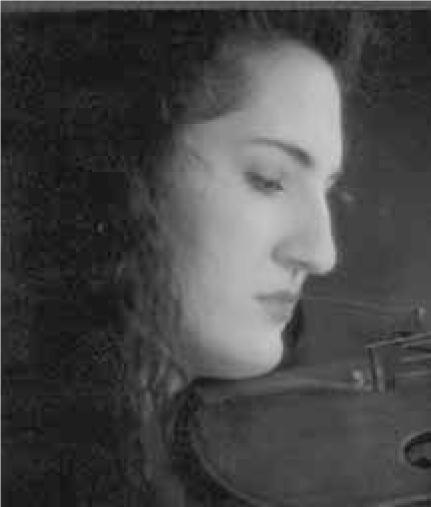
Anne-Marie Brown, a member of the Kansas City Symphony since 2001, performs extensively as soloist and chamber musician throughout the Kansas City area. The Kansas City Star has described her performances as displaying "splendid virtuosity, with a rich impressive tone" and KCMetropolis has said her "playing was stellar, with lyricism and technique to spare." The Miami Herald has noted her work's "silky, suave tone and unaffected beauty." In recent seasons, she has been a frequent soloist with the Kansas City Chamber Orchestra, a guest musician with Summerfest, and a member of the newEar Contemporary Chamber Ensemble, recording a work for piano trio on the Navona label in 2012. In addi on, she serves on the faculty of the Heartland Chamber Music Fes val.
Previously, she was a member of the New World Symphony, where she appeared as both concertmaster and soloist. She holds degrees from Northwestern University and Manha an School of Music.
Dr. Jane Carl, clarinet

Jane Carl, Professor of Clarinet at the University of Missouri-Kansas City Conservatory of Music, received her degrees from the University of Michigan. She has been a member of the South Bend Symphony, the Flint Symphony, and the Michigan Opera Theater Orchestra in Detroit, and
performed with the Toledo Symphony Orchestra and the St. Paul Chamber Orchestra. She performs regularly with the St. Louis Symphony Orchestra, as ac ng assistant principal clarinet from 1999-2003. She can o en be heard performing with the Kansas City Chamber Orchestra and the Kansas City Symphony. She was the ar s c chair of ClarinetFest 2008, the annual conference of the Interna onal Clarinet Associa on, held in Kansas City. Dr. Carl performed at the 2007 China Interna onal Clarinet and Saxophone Fes val in Beijing, and the 2009 ClarinetFest in Porto Portugal. In the fall of 2009, she became the Chair of UMKC’s Instrumental Studies Division. She has performed with Summerfest for over two decades and is a member of the Ar s c Commi ee which selects music heard at Summerfest concerts.
Amanda Collins, horn
Amanda Collins is a graduate of the Peabody Ins tute of the Johns Hopkins University, Preparatory (cer ficate), Pennsylvania State University (BM) and Southern Methodist University (MM). Described as “impressively solid” by the Dallas Morning News, Ms. Collins has quickly become a highly sought a er performer and educator across the US and abroad.
In 2017, Ms. Collins was appointed Principal horn of the Gateways Fes val Orchestra, an ensemble featuring professional musicians of African descent. Addi onally, Ms. Collins is third horn with the Black Pearl Chamber Orchestra and second horn with the
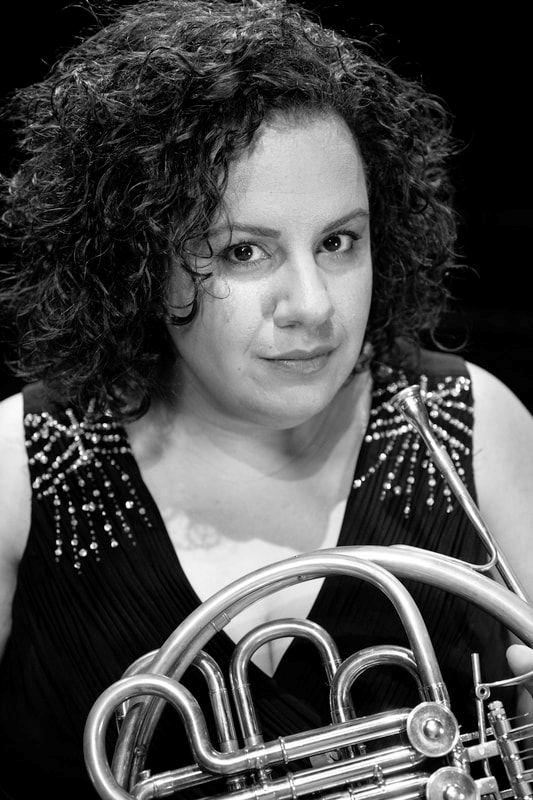
American Studio Orchestra. She has performed with several notable ensembles including the Dallas Symphony Orchestra, Kansas City Symphony, Memphis Symphony, Opera Memphis, Sphinx Symphony Orchestra, Chineke! Orchestra (UK, tour 2019, 2020) and the Lyric Brass Quintet. A sought a er freelancer na onally, she regularly performs for a variety of musical theaters, gospel and R&B/ soul ensembles, pops ensembles and opera companies. Ms. Collins is a passionate educator and is currently Assistant Teaching Professor of French Horn at the University of Missouri. Formerly, she was Adjunct Professor of French Horn at Montgomery College and the University of the District of Columbia. She also served as Instructor of French Horn at the Peabody Ins tute of the Johns Hopkins University, Preparatory and the Duke Ellington School of the Arts.
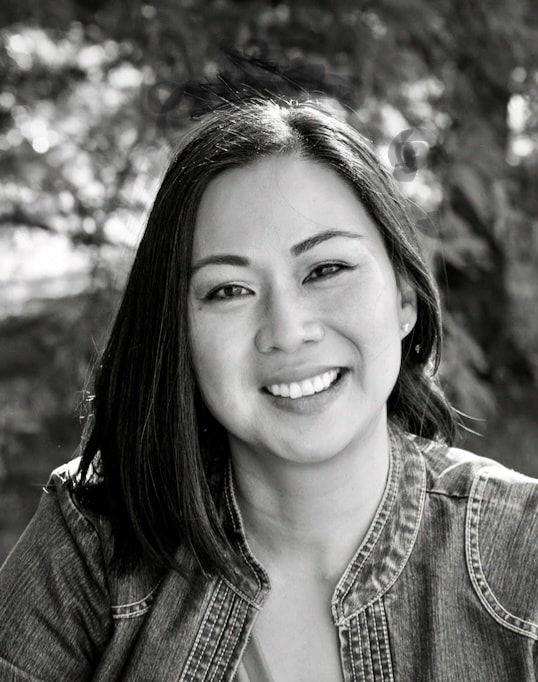
Maria Crosby, cello
Maria Crosby received her undergraduate degree in cello performance from DePaul University in Chicago where she studied with Stephen Balderston and Tanya Carey. She went on to earn a master's degree from the University of Southern California in Los Angeles, under the tutelage of Peter Stumpf.

Maria joined the Kansas City Symphony in 2012. In addi on to full- me orchestral playing, she is also an ac ve chamber musician. She has performed on stages across the United States, Canada, Germany, France, Lithuania, Armenia, Greece, Russia, Japan, and Brazil, and has par cipated in a variety of orchestral and chamber music fes vals, including the Aegean Verdi Fes val, the Schleswig Holstein Musik Fes val, the Pacific Music Fes val, the Banff Chamber Music Residency, the
Recontres francoaméricaines de Musique de Chambre and the Pine Mountain Music Fes val. Maria first performed with Summerfest in 2014.
Dorris Dai Janssen, violin
Dorris Dai Janssen began studying the violin at age 3 and performed in her first orchestra when she was 7. She received her Bachelor of Music in violin performance at the University of Houston and a Master of Music at the University of Minnesota. While living in Minneapolis, Janssen played regularly with the Minnesota Orchestra, with whom she toured the United States, including Carnegie Hall. Her most influen al teachers include William Pu, Fredell Lack, Michael Steinberg and Jorja Fleezanis. Janssen made Kansas City home in 2000, when she won a posi on in the first violin sec on. Since then, she also has held the posi on of Ac ng Assistant Concertmaster for six years and has performed numerous solos with the Kansas City Symphony. Janssen feels extremely fortunate to be able to share music in Kansas City by playing on stage, reaching out on the Mobile Music Box, demonstra ng for children in classrooms, and teaching privately. Her summers belong to Wyoming where she has gone each year since 2001 to be part of the Grand Teton Music Fes val. Janssen lives in Olathe, Kansas, with her husband, two sons and a dog.
Tony DeMarco, violin
Tony DeMarco has been a member of the Kansas City Symphony for 14 seasons. His previous professional experience includes Assistant Concertmaster of both the
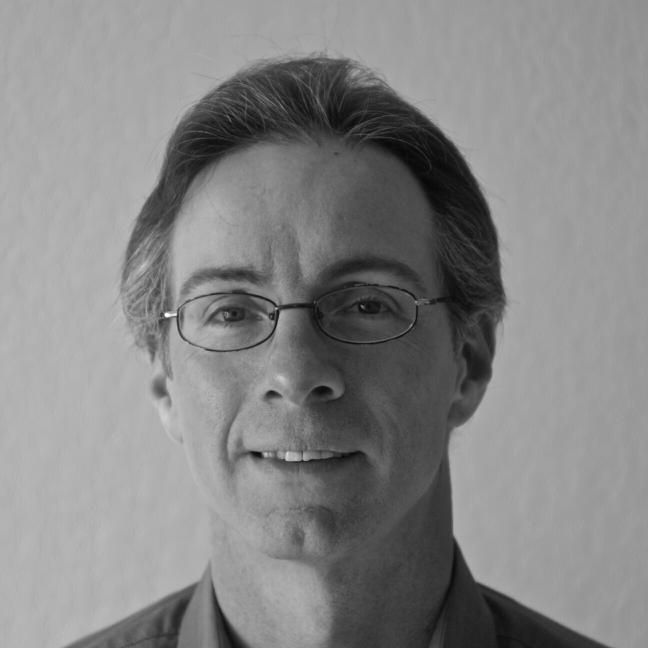
Virginia and North Carolina Symphonies, subs tute for the Pi sburgh Symphony, and a member of the Pi sburgh Opera and Ballet Orchestra. He was raised in the South Hills of Pi sburgh then enrolled at Carnegie- Mellon University at age 16, then transferred to Oberlin Conservatory where he earned an ar st’s diploma. Having chosen his career path at age 9, Tony credits the violin, his mother Bonnie, and his teacher Albert Hirtz of the Pi sburgh Symphony for the opportunity to travel to Asia, Europe, and all around the United States, making las ng friends and playing great music. Best among those friends is his wonderful wife, Jeannine Elashewich. Together with sons Albert and Roman, they now reside in a “Li le House in Prairie Village.”

Alexander
Alexander East is the Assistant Principal Cellist of the Kansas City Symphony. In addi on to du es with the Symphony, which o en include leading the sec on as principal for opera, ballet, and chamber orchestra performances, he is also heard frequently in recitals and chamber music concerts throughout the Kansas City region and with the Sun Valley (ID) Summer Symphony every year since 1992. Before se ling in Kansas City, East spent two seasons as a member of the New World Symphony under the direc on of conductor Michael Tilson Thomas. He received his training at Indiana University and the New England Conservatory of music. His teachers have included Tsuyushi, Tsutsumi, Janos Starker, Laurence Lesser, and Colin Carr. He has performed with Summerfest since 2001 and serves on the Ar s c Commi ee which selects the music heard in Summerfest Concerts.

Shannon Finney, flute Shannon Finney is Associate Principal Flu st for the Kansas City Symphony. She has performed with Summerfest since 1996 and is a former Ar s c Advisor. Her summer work extends to Door County, WI, where performs with and is on the faculty at Birch Creek Music Center. She was a past winner of the Na onal Flute Associa on Piccolo Ar st Compe on and has been a fellow at Tanglewood. Finney has performed with the Chicago Symphony Orchestra, the Pacific Northwest Ballet Orchestra, and the Chicago Sinfonie a. Her teachers include Walfrid Kujala, Mary Stolper, and Karla Flygare, and her degrees are from Northwestern University. Finney enjoys the culinary arts, traveling, and many outdoor ac vi es. An adventurer at heart, Finney spent a month in Nepal in 2014, including two weeks trekking in the Himalayas and reaching Annapurna Base Camp. In 2017 she enjoyed whitewater ra ing with her dad down the en re length of the Grand Canyon.
Michael Gordon, flute Michael Gordon serves as the Principal Flu st of the Kansas City Symphony. Prior to joining the Kansas City Symphony, he was a member of the New World Symphony, where he performed as a soloist in 2007. Gordon has performed with several orchestras across the United States, including the St. Louis Symphony and the Minnesota Orchestra. In 2004, he earned both his bachelor's and master's degrees from Rice University. His teachers include Leone Buyse and Marianne Gedigian. Gordon previously served on the Ar s c Commi ee for Summerfest Concerts.
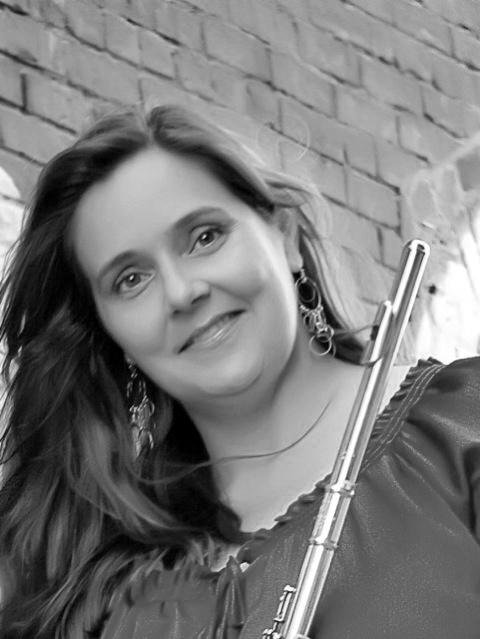
Evan Halloin, bass
Evan Halloin is thrilled to be joining Summerfest as an ar s c advisor in 2023. He was appointed associate principal bass of the Kansas City Symphony in 2016 a er having served as a member of the bass sec on since 2012. Prior to coming to Kansas City he was a member of the New World Symphony. He earned a master’s degree from Rice University and a bachelor’s degree from the New England Conservatory. His primary teachers include Timothy Pi s and Donald Palma. Halloin has performed as a subs tute musician with the Chicago, Milwaukee, and Houston Symphony Orchestras, and the Saint Paul Chamber Orchestra. Originally from De Pere, Wisconsin, Halloin currently resides in Prairie Village, Kansas, where he loves to let his dog Penny take him, his wife Margaret, and two-year-old son Graham for walks around the neighborhood.

Joshua (Josh) Hood, bassoon

Joshua Hood, bassoonist, received his bachelor of music degree from the University of Michigan, where he studied with Lewis Hugh Cooper. He completed his master's degree at the Shepherd School of Music at Rice University with Benjamin Kamins, former Principal Bassoonist of the Houston Symphony. Hood has performed with a number of orchestras including the Kansas City Symphony, Houston Symphony, and the North Carolina Symphony. He joined the Charlo e Repertory Symphony to outstanding reviews. He has also performed with several fes vals including the Pacific Music Fes val in Japan, May Music
Fes val in Charlo e, NC, Gateways Music
Fes val in Rochester, NY, the Music
Academy of the West in Santa Barbara, CA, and with the Ritz Chamber Players on the Amelia Island Music Fes val in Florida. He has performed with Summerfest since 1998.
Rena Ishii, violin Rena Ishii joined the Kansas City Symphony in 2011. She holds bachelors and masters degrees in violin performance from University of Cincinna College-Conservatory of Music, where she studied with Won-Bin Yim. She con nued her studies with William Preucil at Cleveland Ins tute of Music and received a professional studies cer ficate. In the Cleveland area, she became ac ve as an orchestra player and was a member of Canton Symphony, Akron Symphony and the Cleveland Pops Orchestra. Ishii has spent summers at Aspen Music Fes val, Spoleto USA, and Tanglewood Music Center. Ishii has a passion for teaching as well. She has been ac vely teaching privately and at schools. In her free me, she enjoys jogging, cooking, and reading.

Celeste Johnson is currently Associate Professor of Oboe at the University of Missouri-Kansas City Conservatory and remains ac ve as a performer, pedagogue, clinician and presenter. She performs as a subs tute with the Kansas City Symphony and has also performed as a featured soloist with the Tulsa Symphony Orchestra, of which she was a member for eleven seasons. As a performer, Celeste has presented concerts in Japan, Colombia, Switzerland, the Isle of Man (Bri sh
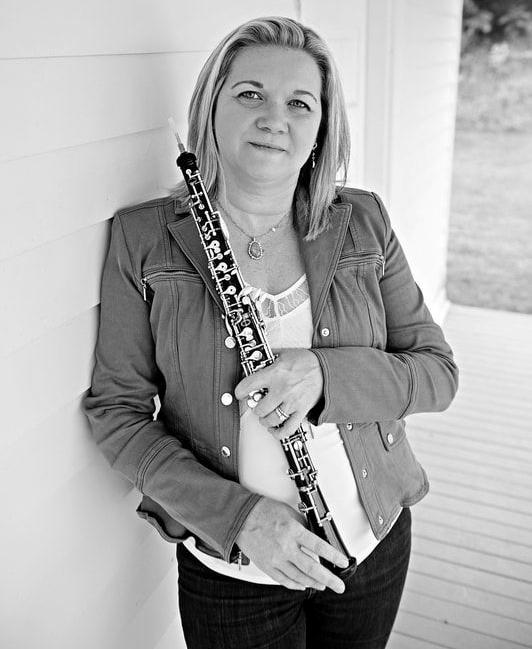
Isles), Canada and across the United States.
Her first recording, KaleidosCoping, features 21st century composi ons for flute, oboe and piano and was released in 2019 on the Equilibrium label. Her second album, Wider Than the Sky, features composi ons by women composers and was released on the same label in 2023.
Celeste maintains ac ve memberships in professional organiza ons, and as such has presented at the Interna onal Double Reed Society, Midwest Double Reed Society as well as the Texas, Missouri and Oklahoma Music Educators Associa on conferences. She has recently been named chair of the Norma Hooks Young Ar st Compe on for oboe, hosted by the Interna onal Double Reed Society bi-annually.
Ms. Johnson holds degrees from the Eastman School of Music and the University of Illinois at UrbanaChampaign.
Duke Lee, viola
Duke Lee is a na ve of Houston, Texas. He a ended the Oberlin Conservatory of Music and the Juilliard School. He also was a fellow at the New World Symphony. Lee has been a member of the Kansas City Symphony since 2006. Lee is married to Kansas City Symphony violinist Rena Ishii and they have three boys, Leon, Anton, and Owen.
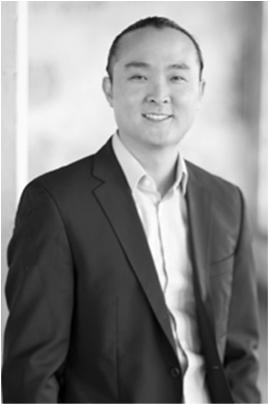
since 1997. She has performed locally with the Boulevard String Quartet, newEar, the Kansas City Chamber Orchestra, and on a variety of chamber music, solo, and educa onal projects. Before moving to Kansas City, Jessica was Principal Viola in the Michigan Opera Theater and with the Pi sburgh Symphony Orchestra. She a ended the University of Michigan where she studied with Yizhak Scho en. Jessica is married to trumpeter Brian Rood and together they have two children. When not playing the viola, she enjoys running and triathlon training. Jessica has performed with Summerfest since 2000.
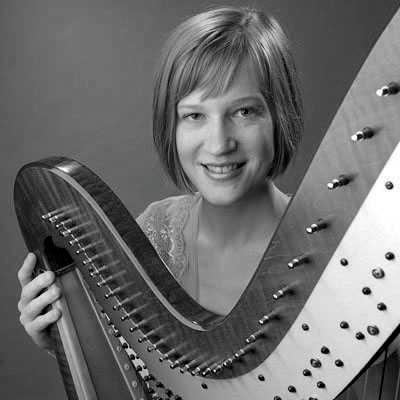
Jessica Nance, viola
Jessica Nance has been a member of the Kansas City Symphony since 1995 and Assistant Principal Viola
Harpist Tabitha Reist Steiner began her musical studies at age four in piano and at age eight in harp. An ac ve freelancer throughout the Midwest, her playing was lauded as “… some of the most precise and beau fully inflected harp playing….” by the Kansas City Star. Steiner is principal harpist with the Topeka Symphony Orchestra and a regular extra with the Kansas City Symphony and the Tulsa Symphony Orchestra. In the past, she has held principal harp posi ons with the Tulsa Symphony Orchestra, Dayton Philharmonic Orchestra, Tulsa Opera Orchestra and the Washington, D.C. Summer Opera Orchestra. In addi on to the Summerfest Chamber Music Fes val, she is performing with Des Moines Metro Opera this summer. Steiner earned a master of music degree from the Peabody Conservatory of the Johns Hopkins University and a bachelor of music degree from Washburn University.

Melissa Rose, piano
Pianist Melissa Rose has collaborated with instrumentalists and singers in concerts throughout the United States and at venues in Argen na, Malta, Santorini, and Russia. She has recorded and edited arrangements for viola/piano of the Tonadillas by Granados (ViolaSound), one of which was included in the 2017 Grammy-nominated music film, The Music of Strangers. In addi on to chamber music recordings on the Naxos, Centaur, Blue Griffin, Delos, Good Child Music, and Navona Records labels, Melissa has par cipated in numerous premieres and residencies with leading American composers and is a member of ALIAS Chamber Ensemble in Nashville. Currently a Professor of Piano and Senior Associate Dean at Vanderbilt Blair School of Music, she enjoys preparing pianists for careers in collabora on. Melissa received the M.M. in piano performance from the Yale School of Music and the D.M.A. in collabora ve piano from the University of Michigan. Melissa has enjoyed performing with Summerfest since 1994.
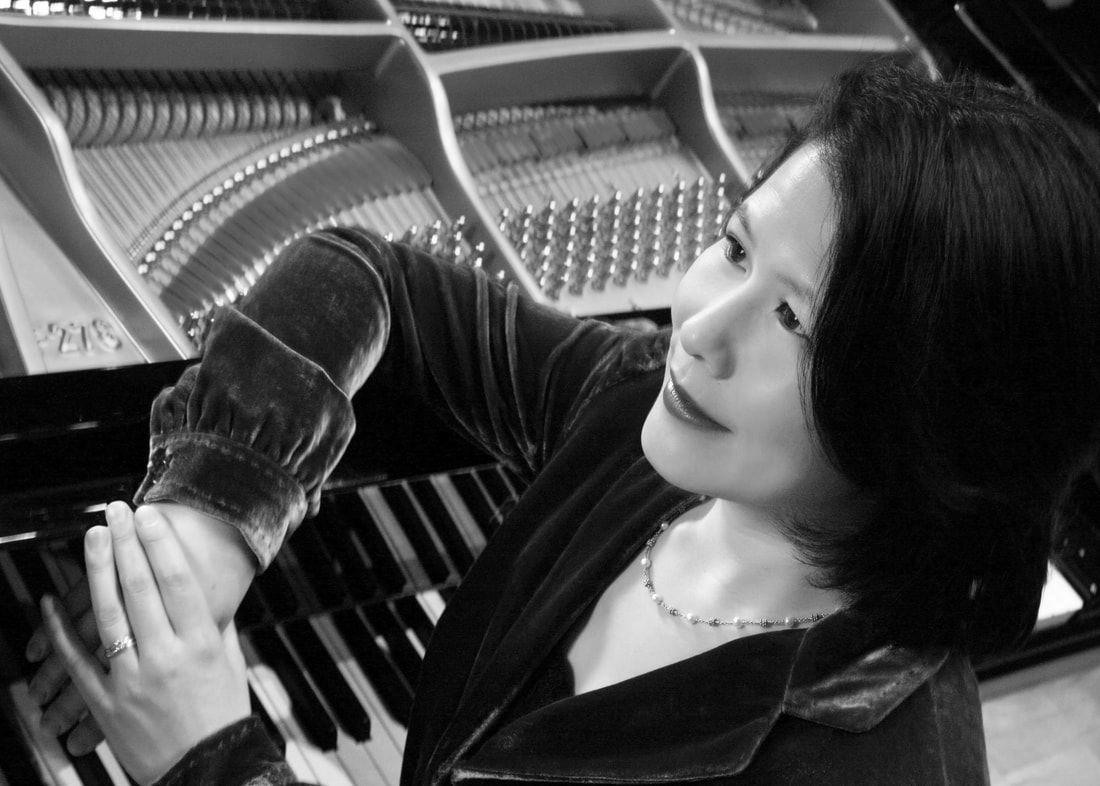
Richard Ryan, bass Richard Ryan, an Arizona na ve, has been a Kansas City Symphony member for four seasons. Before his tenure in Kansas City, he was Assistant Principal bass of the Louisville Orchestra. A graduate of Indiana University Jacobs School of Music, Richard has par cipated in music fes vals such as Aspen and Artosphere, and has conducted the Louisville Youth Orchestra and Kling Chamber Orchestra.
Karen Savage, piano
Praised as a "tour de force" (Santa Barbara NewsPress), for "breathtaking beauty and pure lyricism" (Le Soleil, Vancouver), and for “fearless performance” (The Straits Times, Singapore), Karen Hsiao Savage is Associate Professor of Collabora ve Piano and Coordinator of Chamber Music at UMKC Conservatory.
Karen received a doctoral and two masters degrees (in solo and collabora ve piano) from Juilliard, and a BMus from University of Victoria. She has performed interna onally in such venues as Carnegie Hall’s Weill Hall, Merkin Hall, Alice Tully Hall, Shanghai Grand Theatre, and Perlman Music Program, with broadcasts on interna onally syndicated NPR programs and on Vietnamese and Chinese na onal television. Recent performances include those with members of the Kansas City Symphony, New York Philharmonic, LA Philharmonic, Chiara quartet’s Hyeyung Yoon and Gregory Beaver, and a recording of works by women composers with oboist Celeste Johnson.

An ac ve performer and teacher, Dan Velicer appears regularly with the Kansas City Symphony, Trio Fedele, and the Lyric Arts Trio. He is a frequent collaborator with members of the Kansas City Symphony and the UMKC Conservatory faculty. Velicer also helps university and high school students prepare for recitals and compe ons. Prior to arriving in Kansas City, he was an Opera Coach Fellow at the Aspen Music
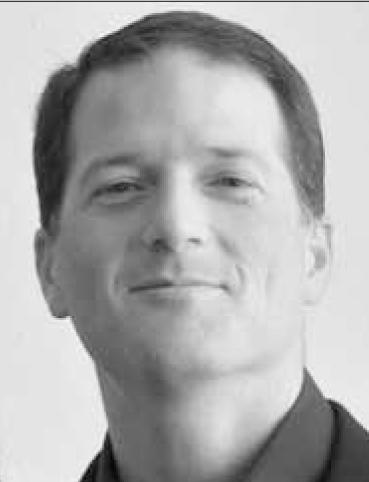
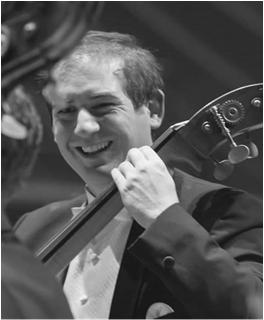
Fes val and the head staff pianist at the University of the Pacific Conservatory of Music. Along with his wife, Kris , Velicer was on the faculty of the Rocky Mountain Summer Conservatory where he coached chamber music, led master classes, and performed with faculty. He received his bachelor of arts degree from Cornell University, majoring in both anthropology and music. He received his master of music degree from Rice University.
Jesse Yukimura, viola Violist Jesse Keone Yukimura, from Washington State, discovered at an early age the joys of ensemble music, from chamber music to orchestra. Jesse received a Bachelor of Music degree in Viola Performance from the Oberlin Conservatory of Music, where he studied with Peter Slowik, as well as a Bachelor of Arts in Chemistry from Oberlin College. He then studied with Ralph Fielding at the Lynn Conservatory of Music, where he earned a Master of Music degree and a Professional Performance Cer ficate. Before moving to Kansas City, Jesse was a viola fellow at the New World Symphony in Miami Beach, an orchestral academy founded by ar s c director Michael Tilson Thomas. Jesse joined the Kansas City Symphony in 2018, previously joined KC Summerfest in 2019, and is excited to play again this summer. Outside of music, Jesse maintains a variety of interests, from birdwatching to boardgames.
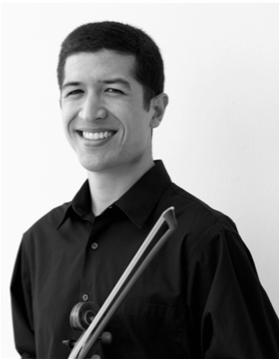
Summerfest Annotator
Dr. Andrew Granade: Dr. Andrew Granade is an Assistant Professor and Area Coordinator for Musicology at the UMKC Conservatory of Music and Dance. His research and teaching focus on the recep on and percep on of modern music in a variety of forms and genres. He is comple ng a book exploring the impact of the hobo persona on Harry Partch’s life, work, and recep on, as well as the issues of exo cism that arise from it. The interest in exo cism carries over into his other areas of interest, especially the shape-note singing tradi on of the rural American South and the interplay between Chinese and American music in the 20th century.

Summerfest’s 31st season was made possible with generous support from the following:
Founda on Support:
$5,000-9,999
Missouri Arts Council

Richard J. Stern Founda on for the Arts
William T. Kemper
Founda on
$1,000 –4,999
Martha Lee Cain Tranby
Music Enrichment Fund
Neighborhood Tourist Development Fund

Individual Contributors:
Benefactors ($2,500+)
Charles and Virginia Clark Fund
The Stephen and Karen Clegg Fund
Patrons ($1,000-2,499)
Lisa Browar
Miller-Mellor Associa on Dr. Mary Redmon
Don Shanks
Barbara and Burt Smoliar
Brogan and Lara Sullivan
Sponsors ($500-999)
Carolyn Brewer
Noble Freeman
K&L Gates LLP
Donors ($250-499)
John Schaefer
Friends ($25-249)
Bruce Bradley
Jane Carl
Daniel Co on Una Creditor
James East
Sara Engber
Julie Elfving
Board of Directors
Brogan Sullivan, President
Lisa Browar, Vice President
Stephanie Miller, Treasurer
Noble Freeman, Secretary
Carolyn Brewer
Robin Onikul
Mary Redmon
John Schaefer
Don Shanks
Ar s c Advisors
Jane Carl
Alexander East
Evan Halloin
Celeste Johnson-Frehner
Ex-Officio
Cory Unrein, Administra ve Coordinator
A Sincere Thank You
The Summerfest board and staff would like to recognize the following for their generous and invaluable contribu ons:
St. Mary’s Episcopal Church
Raja Reed, Parish Administrator
Program Notes
Dr. Andrew Granade
Susan Hawk
Yvonne Jameson
Mary Kowalski
John Kinsey and Mar Moore
Jon Kowing
Stephanie Miller
Kathryn Pruessner Peters
Chad and Kris n Reickard, in memory of Terry Pritche
Alvin Schneider
Mareta Smith
Rita Spillman
Cory Unrein
Ronda Warren
Dan and Barbara Weary Fund
Debbie Williamson
Dona ons reflect giving from June 1, 2022—June 1, 2023.
Photography
Andrew Schwartz, Veritography
Piano Tuning—St. Mary’s John Yerardi
Social Media Assistance
Dani Hoisington
Stage Manager
Brandon Crawford
Adam Stallings
Housing
Carolyn Brewer
Jane Carl and Jan Gippo
Summerfest, a professional chamber music ensemble, enriches the cultural life of Kansas City through the performance of a variety of music in a se ng that fosters interac on between musicians and audience members.


In 1990, contempla ng the year ahead, Lamar Hunt Jr. no ced that art enthusiasts and musicians had limited or no op ons for live classical music during the summer. The following year, a er much planning and prepara on, Lamar and four of his colleagues set forth the tradi on of the Summerfest concert series. Equipped with their superior talent, excitement for chamber music, and energy to create, this group did a casual series of concerts in suburban Kansas City area churches. And the rest, as they say, is history. Over the last 30 years, though leadership and personnel have changed, Summerfest has never lost sight of its original inten ons; providing a rare and unique opportunity for high quality, fine arts experiences in Kansas City during July. We con nue to program innova ve and unique concerts in which our patrons can be both challenged and entertained. We remain focused on making music accessible to all through our outreach efforts with youth and seniors. And we remain commi ed to enriching this great Kansas City arts community.
To our loyal patrons, thank you for your con nued support and enthusiasm for what we do. To those of you new to our concerts, we welcome you enthusias cally and look forward to sharing our classical chamber music experience with you.